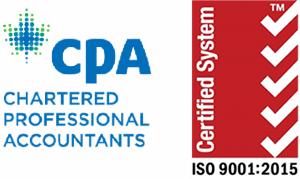The income tax incentives are one of a number of initiatives that will provide further support for zero-emission vehicles. For example, the provision of $300 million over three years, starting in 2019–20, to Transport Canada to introduce a new federal purchase incentive of up to $5,000 for electric battery or hydrogen fuel cell vehicles with a manufacturer’s suggested retail price of less than $45,000.
Note that the above referenced income tax changes prohibit vehicle purchases from benefitting from the new 100% CCA write-off under new CCA classes 54 and 55 where the purchase incentive has been received.
Insight into the New Rules
The 2019 budget notes that, for income tax purposes, vehicles generally fall within classes 10, 10.1 or 16. The intention is that zero-emission vehicles and zero-emission passenger vehicles that would fall in classes 10 or 10.1 will fall into new class 54 and that those vehicles that would otherwise fall into class 16 would qualify for class 55. The general CCA rate for class 54 is the same 30% rate that applies to class 10 and 10.1 and the class 55 CCA rate of 40% matches the rate that applies to class 16. The difference in income tax treatment is the permissible CCA that can be claimed in the first year where a new zero-emission vehicle that has been acquired is made available for use. The comparison that includes the accelerated investment incentive (AII) (from the 2018 Fall Economic Statement – November 21/18) is as follows:
First year CCA First year CCA First year CCA
Prior to Nov 21/18 AII Zero-emission
Class 10 & 10.1 15% 45% 100% (Class 54)
Class 16 20% 60% 100% (Class 55)
It is also noteworthy that the input tax credits will be recoverable based on the 100% write-off resulting in a quicker recovery of GST/HST.
Qualifying zero-emission vehicles will include new electric battery, plug-in hybrid (with a battery capacity of at least 15 kWh) or hydrogen fuel cell vehicles, including light, medium and heavy duty vehicles purchased by a business. In addition, the vehicles would have had to qualify for inclusion in classes 10, 10.1 or 16. Furthermore zero-emission passenger vehicles will be subject to a $55,000 limit per such vehicle which the government promises will be reviewed annually and adjusted accordingly.
Additional features to be aware of include the following:
- Election ITR 1103(2j): This election allows a business to opt out of Class 54 or 55 treatment which would otherwise be automatic. The election has to be filed in the year the vehicle would be available for use. Late filed or amended elections will not be allowed;
- Separate Class: There will be no separate prescribed class for each passenger vehicle as there is with Class 10.1. Class 54 will contain all zero-emission vehicles where an election to opt out has not been made and where Class 16/55 would not apply. This means that class 54 will include capped passenger vehicles plus other vehicles;
- Recapture and Terminal Losses: Class 10.1 does not permit either recapture or terminal losses but instead allows a partial CCA claim in the year in which a vehicle is disposed. Class 54 which will contain the roughly equivalent capped zero-emission passenger vehicles will operate in the traditional sense where recapture and terminal loss may apply. A new rule however will apply to prorate the amount credited to the UCC for capped zero-emission passenger vehicles. If for example such a vehicle cost $110,000 and was subsequently sold for $17,000 the proceeds would be reduced to $8,500determined as [($55,000/$110,000)($17,000)];
- Other CCA rules: Other CCA rules that the budget refers to as “integrity rules” continue to apply in the same manner as always including the leasing property restrictions, the interest expense limitations of ITA 67.2, the short fiscal period rules of ITR 100(3), etc.
- The $5,000 federal purchase incentive: As mentioned the Class 54 and 55 incentives will not apply where the $5,000 purchase incentive has been paid for vehicles with cost of $45,000 or less. Our understanding is that the incentive will be applied automatically at the vehicle dealer level meaning that only zero-emission passenger vehicles in excess of $45,000 will be eligible for the 100% write-off. The “point of sale” incentive means that it will be necessary to review the vehicle purchase documents to determine whether accelerated CCA is available. Note that there are caps in the number of vehicles which can benefit from the incentive each year (1 for individuals, 10 for a business). For more info on the incentive see:
As a business owner every dollar you are able to expense or write-off is a dollar you won’t pay tax on. If you are interested in learning how to maximize your expenses and minimize your taxes, register for our advanced course on what you can write off.






